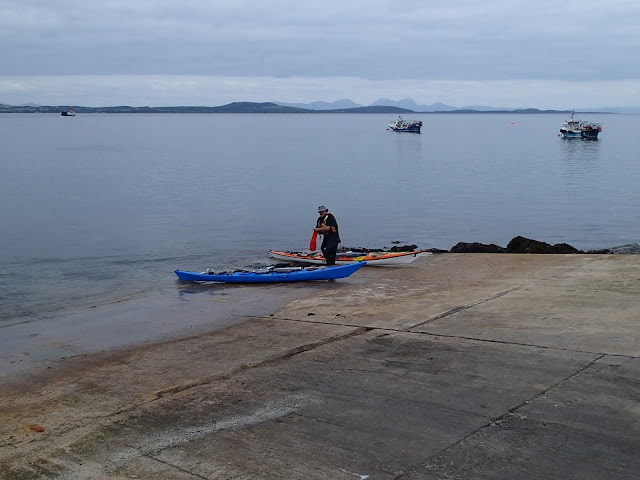The predominant colour is golden yellow as on these Aspens beside the River Don at Montgarrie near to home, the colour reflecting beautifully onto a deeper stretch of the river. We saw a Kingfisher here recently, a new arrival on this part of the river - a blue jewel flashing across the gold.
On our regular evening walk in the woods nearby the advance of autumn is really apparent as the sun dips lower, the light gold tinged with soft greens.....
...backed with the warm brown of heather on the hills. This view is across the River Don towards Bennachie.
The golden colour reached its height on a dull day when the birches and larches along the River Dee at Invercauld were so vibrant that they actually altered the whole quality of light alongside the river.
Not just gold; reds too. The Rowans (Sorbus accuparia) are aflame with vibrant dark red shades.
Not quite as red as the knitted decorations adorning the bridge over the Clunie Water at Braemar though! These colourful "wild knitting" creations were a temporary art installation knitted by local people as part of a "wild knitting trail" , and after being on display for a week were sold at a craft event in the village.
The carpets of Beech leaves on the woodland floor are a quintessential part of autumn, kicking through them isn't just for small kids!
The gold theme returns when the Beech leaves are joined by those of Sycamores. Wet weather intensifies the colours of the leaves which have already fallen.......
......whilst sunshine illuminates those still to fall with beautiful light as the green chlorophyll of summer recedes and allows the hidden shades to emerge.
There's another element to the October palette too - brilliant white. On the day when clocks in the UK reverted to UTC signalling the end of British Summer Time, the first snow fell on the high ground of Ben Avon, at 1171 metres/3842 feet one of Scotland's highest hills.
During the second half of the month we've seen skeins of geese high overhead, trailing their wild music behind them as they head south from breeding grounds in Svalbard, Greenland and the high Arctic to winter in the comparatively mild climate of the UK. And this morning, the unmistakable chatter of the first flocks of Fieldfares arriving from Scandinavia.
October is such a great month!






















































